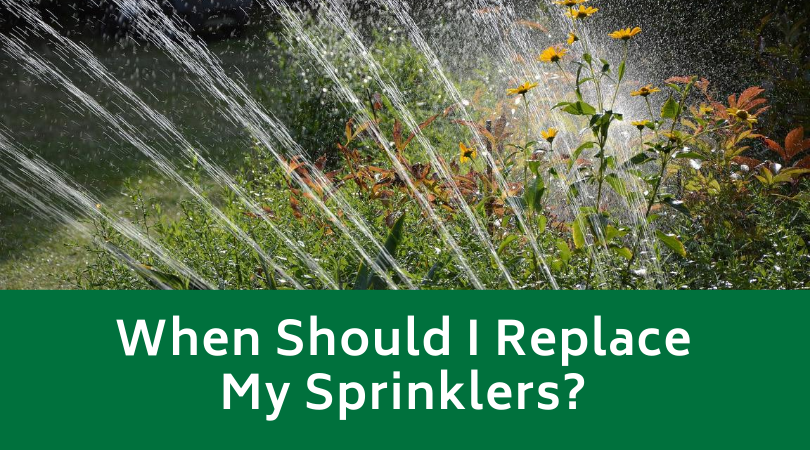
As homeowners, you take great pride in having a stunning yard. The key to getting this yard and keeping it is a well-designed sprinkler system that uses quality components. It only makes sense that you want it to last for as long as possible without having to constantly maintain or overhaul it. When should you replace your sprinkler system, and what can you do to make it last longer?
Average Lifespan for a Sprinkler System
As a general rule, you can expect your sprinkler system to last around 20 years on average. The components have slightly different lifespans if you use quality materials. Sprinkler heads can easily last between 10 and 15 years, but inexpensive ones will only last between two and three years before you have to replace them. Depending on your climate and water quality, you’ll replace your nozzles every two years.
Your sprinkler system’s pipes are the most durable part of the entire setup, and this means that they’ll last the longest out of any component. The piping can last upwards of 40 years before you have to replace them. You will have to routinely replace the wires due to corrosion. Controllers can last between 5 and 10 years, and valves can last 10 to 15 years.
Damage and irrigation failures can come into play to impact your sprinkler system’s lifespan. Previous repairs, age of the irrigation system, landscape, rodent activity, tree proximity, the quality of the water, and vandalism all help determine how often you replace parts or the whole system. However, the components and the installation quality are the two biggest factors.
Making Your Sprinkler System Last Longer
There are a few things you can do to make your sprinkler system last longer and resist wear and tear. You can break this general maintenance down into three broad categories.
Spring
Create a start-up procedure for the spring by doing a thorough checkup of your entire system. Look for broken pipes or heads, and make sure everything is functioning at 100%. All of your sprinkler heads should have good overlap, and you want to slowly switch your water on to avoid creating a pressure surge that could damage the pipe fittings or valves.
Mid-Season
You’ll have to fine-tune your sprinkler system as the hotter months come along. Look at the heads on your system and remove any blockages or debris. Check the rotors for damage, and make any necessary repairs you see. The goal is to get your lawn, so the system waters it adequately each time it switches on.
Winterization
As the cooler fall temperatures start to come in, it’s important that you perform winterization tips to help your irrigation make it through the freeze. Use compressed air to blow all of the remaining water out of the lines and valves to avoid freezing. You want a professional to do this step for you, so you don’t accidentally damage something.
Contact Evergreen Landscaping
If it’s time to inspect or repair your irrigation system, contact us. We can help look for any problems, install a whole new system, or troubleshoot to get your sprinkler system working at 100% capacity again.

Thank you so much for your advice on how to care for a sprinkler system during the mid-season times of the year. The hot months in our area are considerably longer than the rest of the year, so I want to make sure we treat our replacement system right to make it last long even through the heat. Once I find a sprinkler repair service that can fix up and replace some of our parts, I’ll make sure I follow your tips on what to look out for.
Thanks for the tip about how fine-tuning my sprinkler would be important to consider during the hotter months of the year. I better get sprinkler repair services soon because I wouldn’t want to be forced to manually water my plants when the summer comes. I almost suffered a heatstroke last year so I will be a bit more cautious now about going out much during the summer.
Thanks for not only mentioning when you should replace the sprinklers but also how to avoid any problems in the first place, great post! Especially the part about Winterization, some people don’t have a clue what that is and it’s very harmful if people don’t do it.